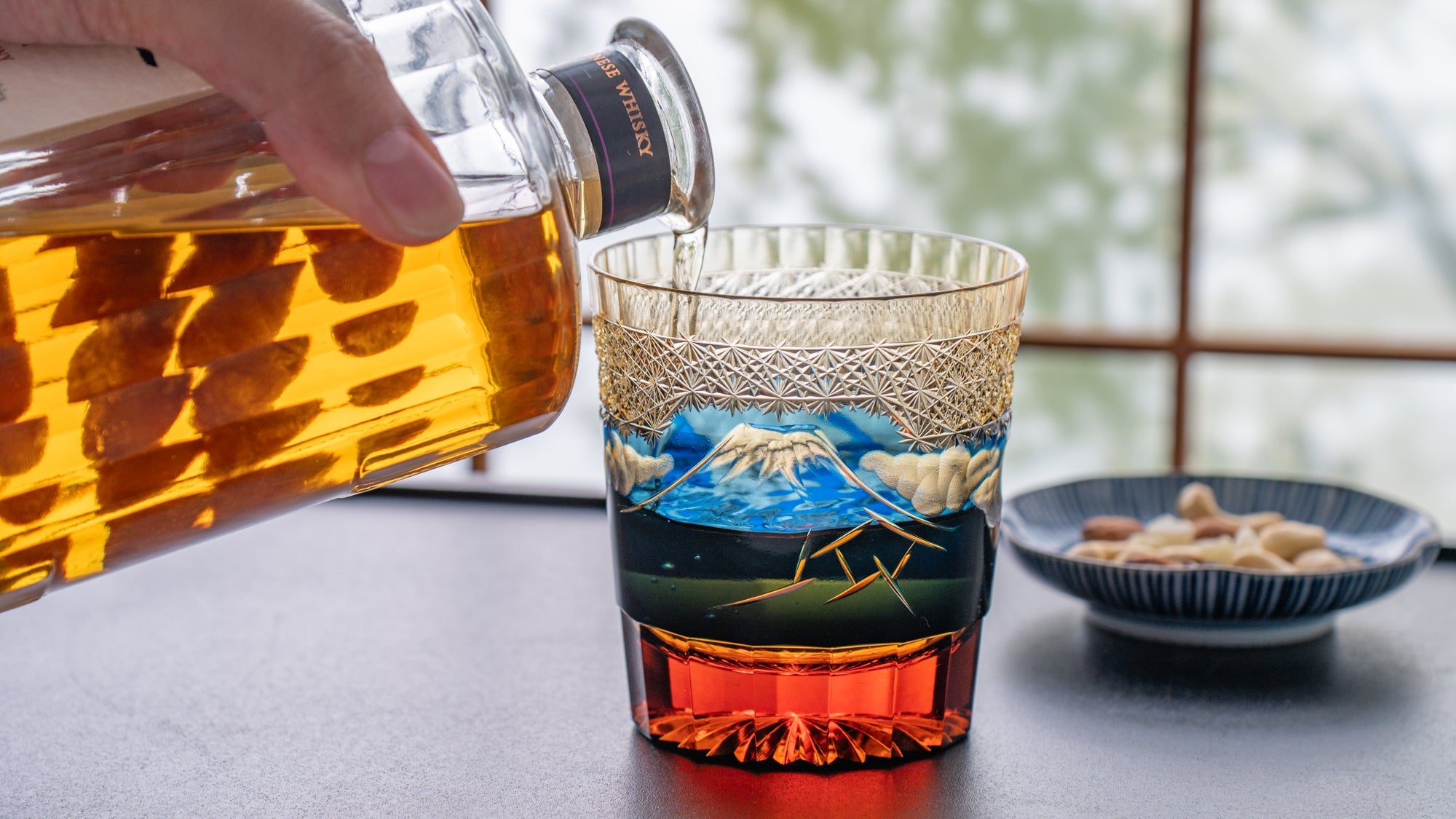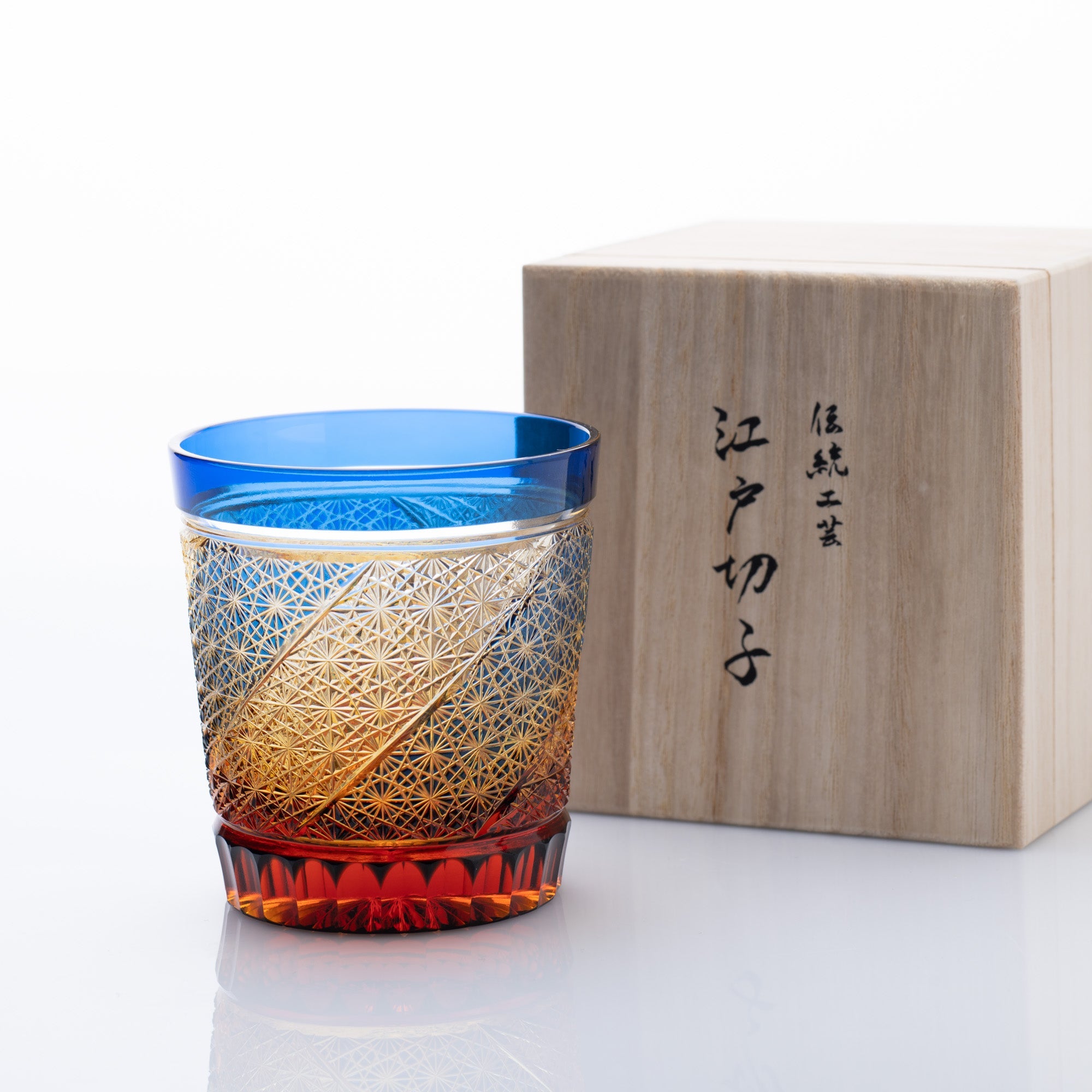
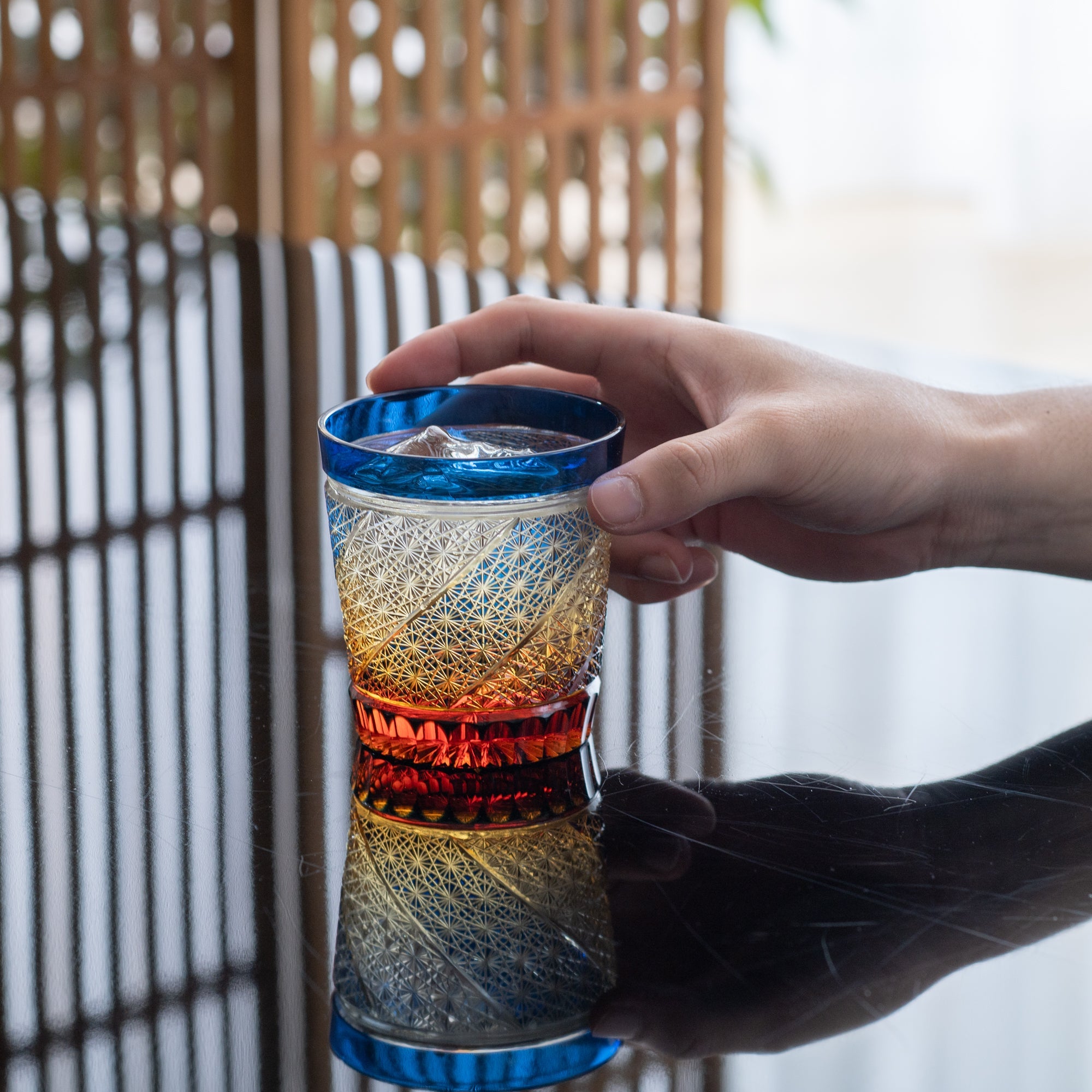
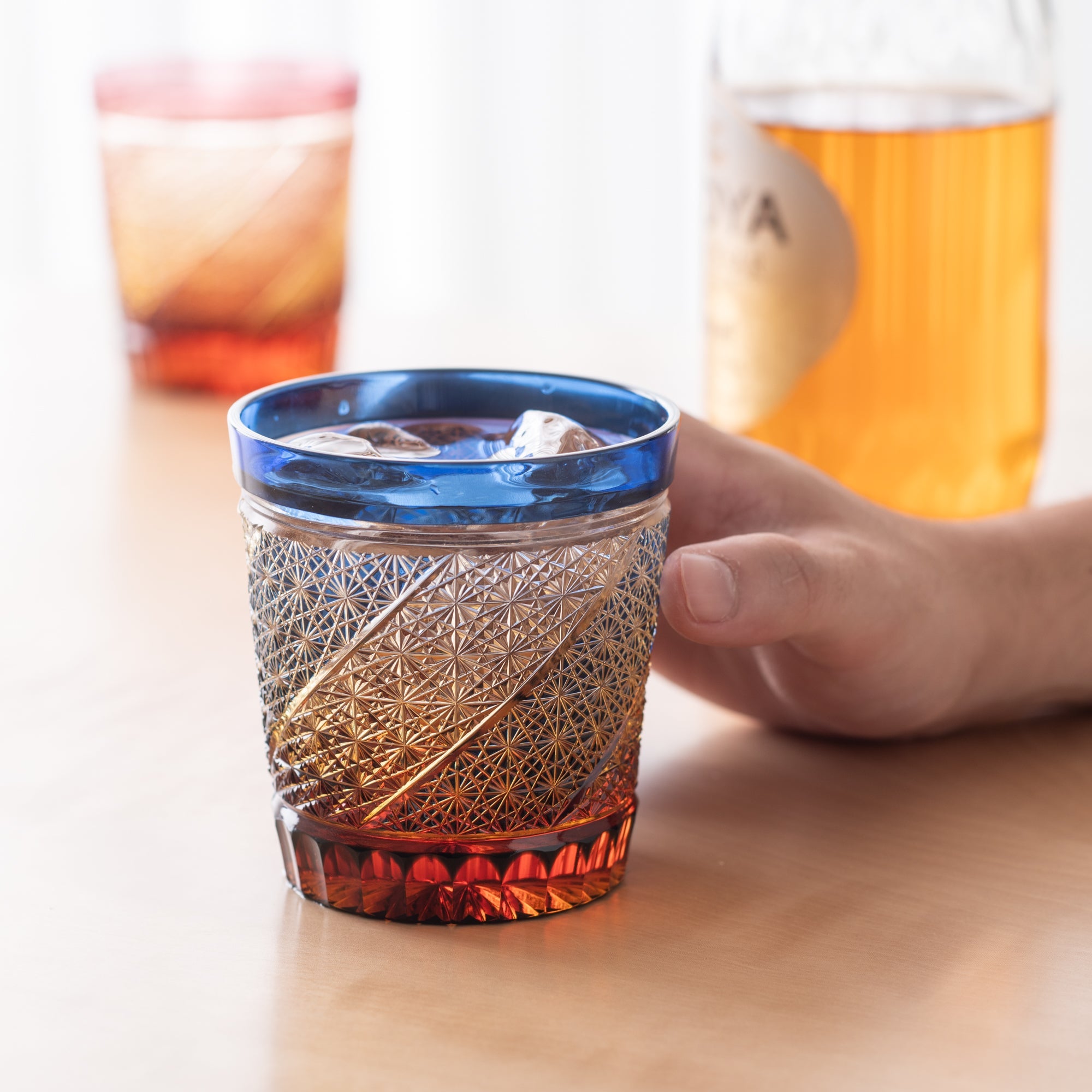
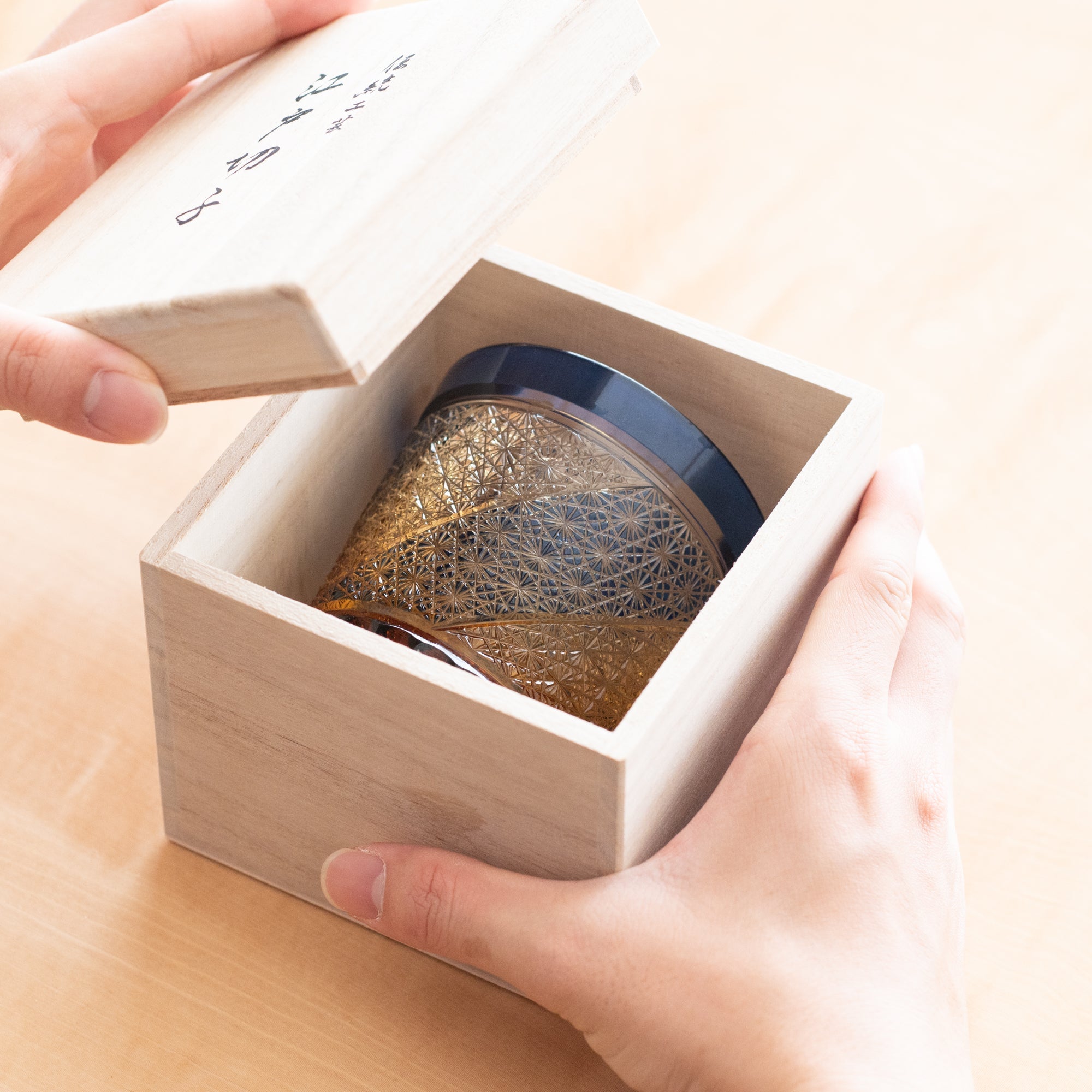
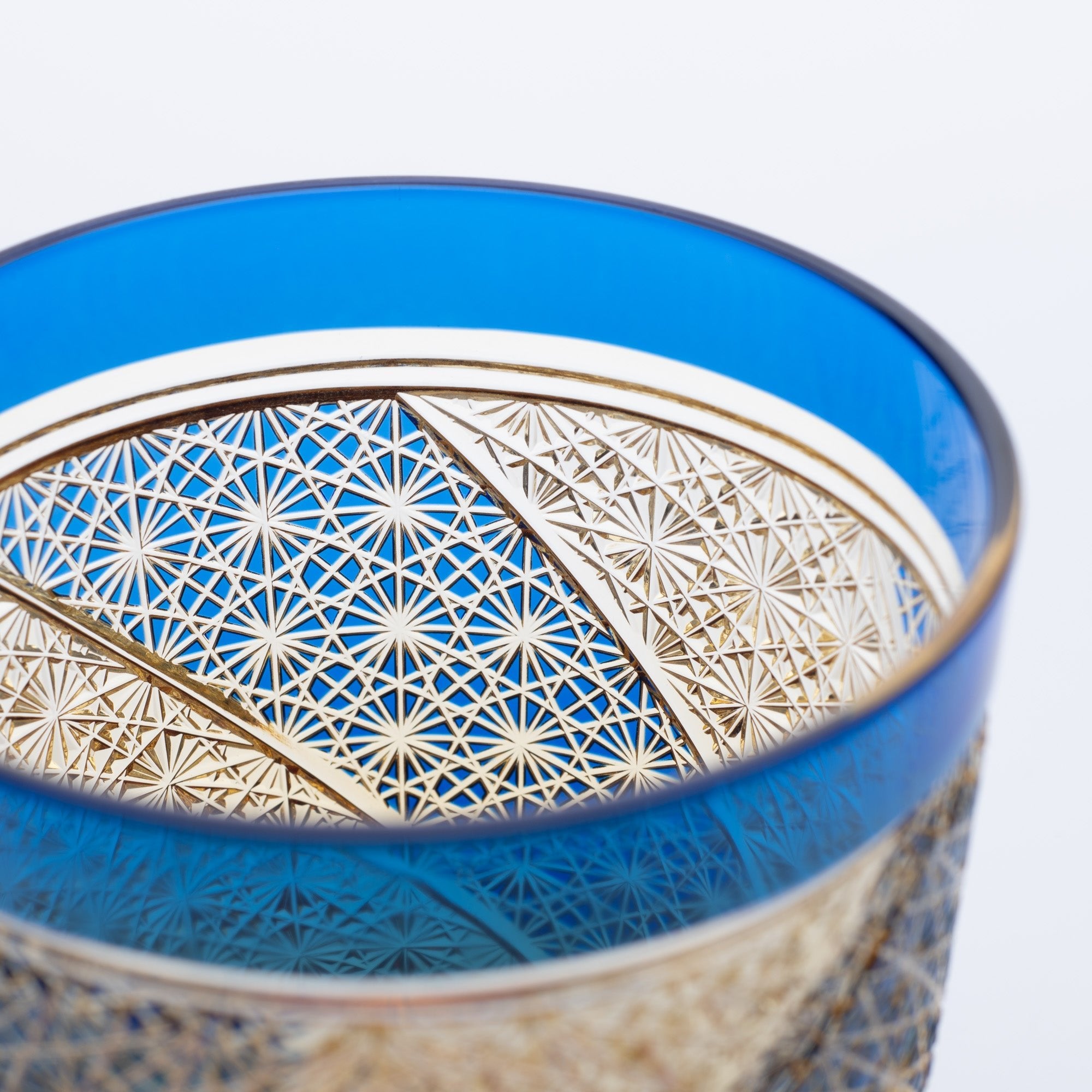
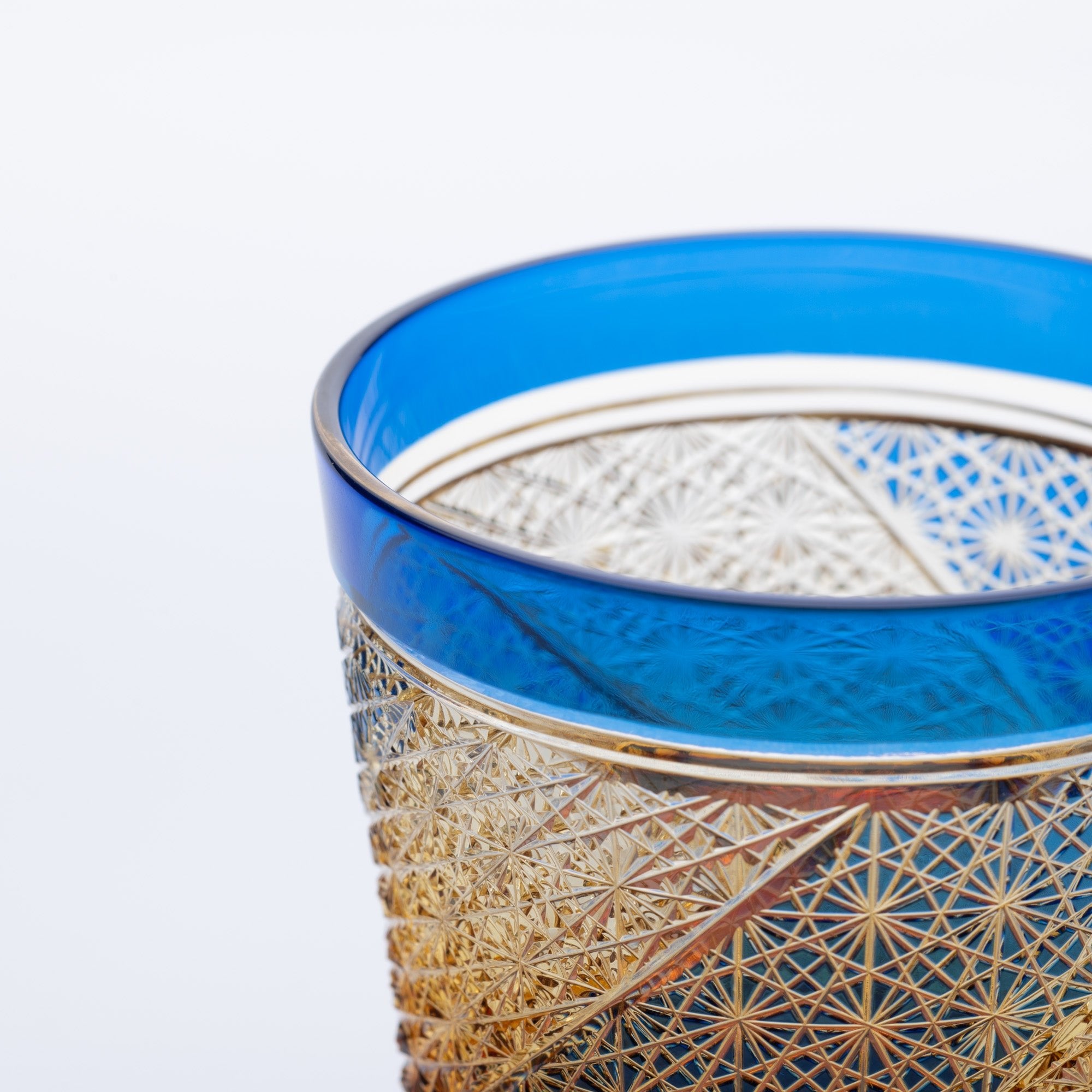
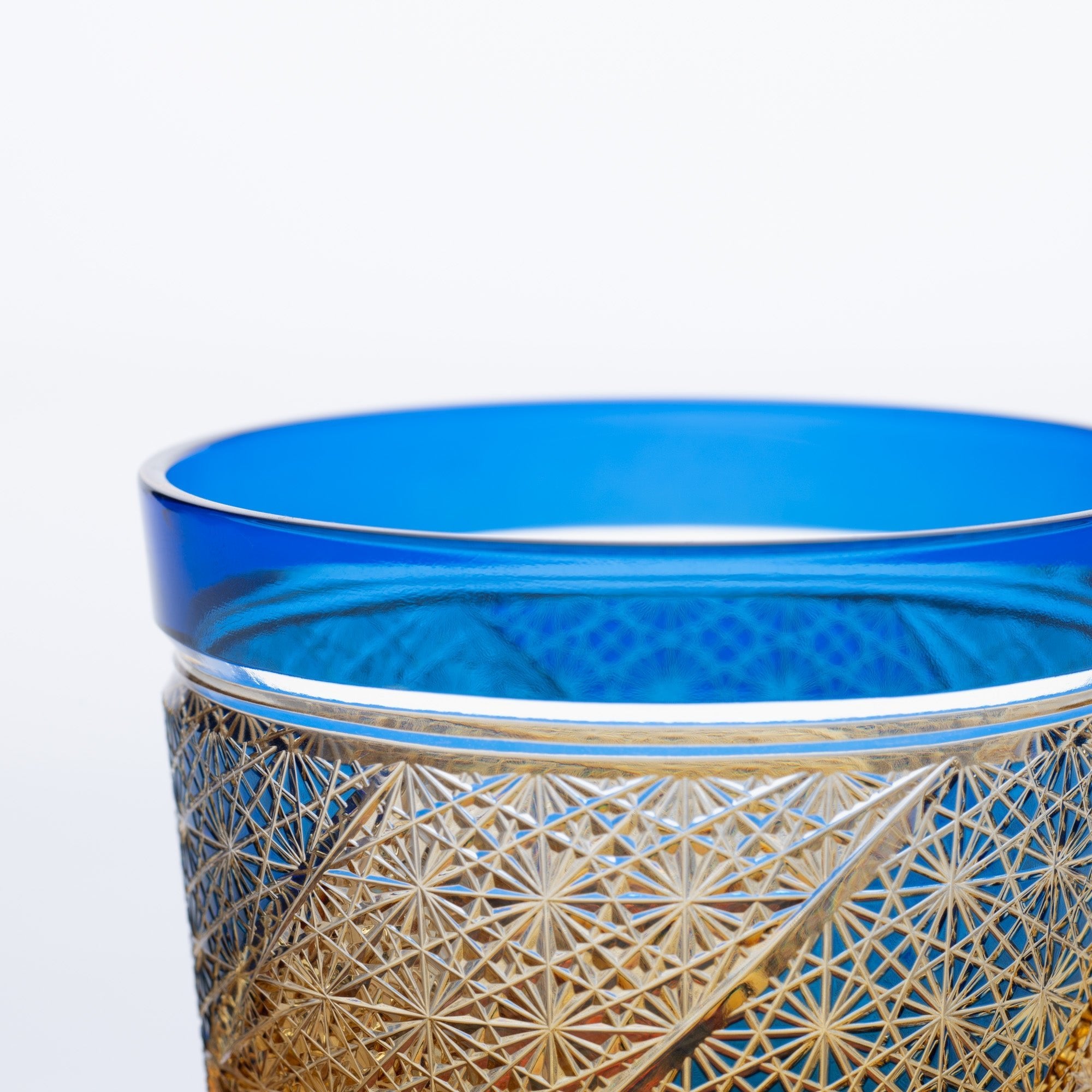
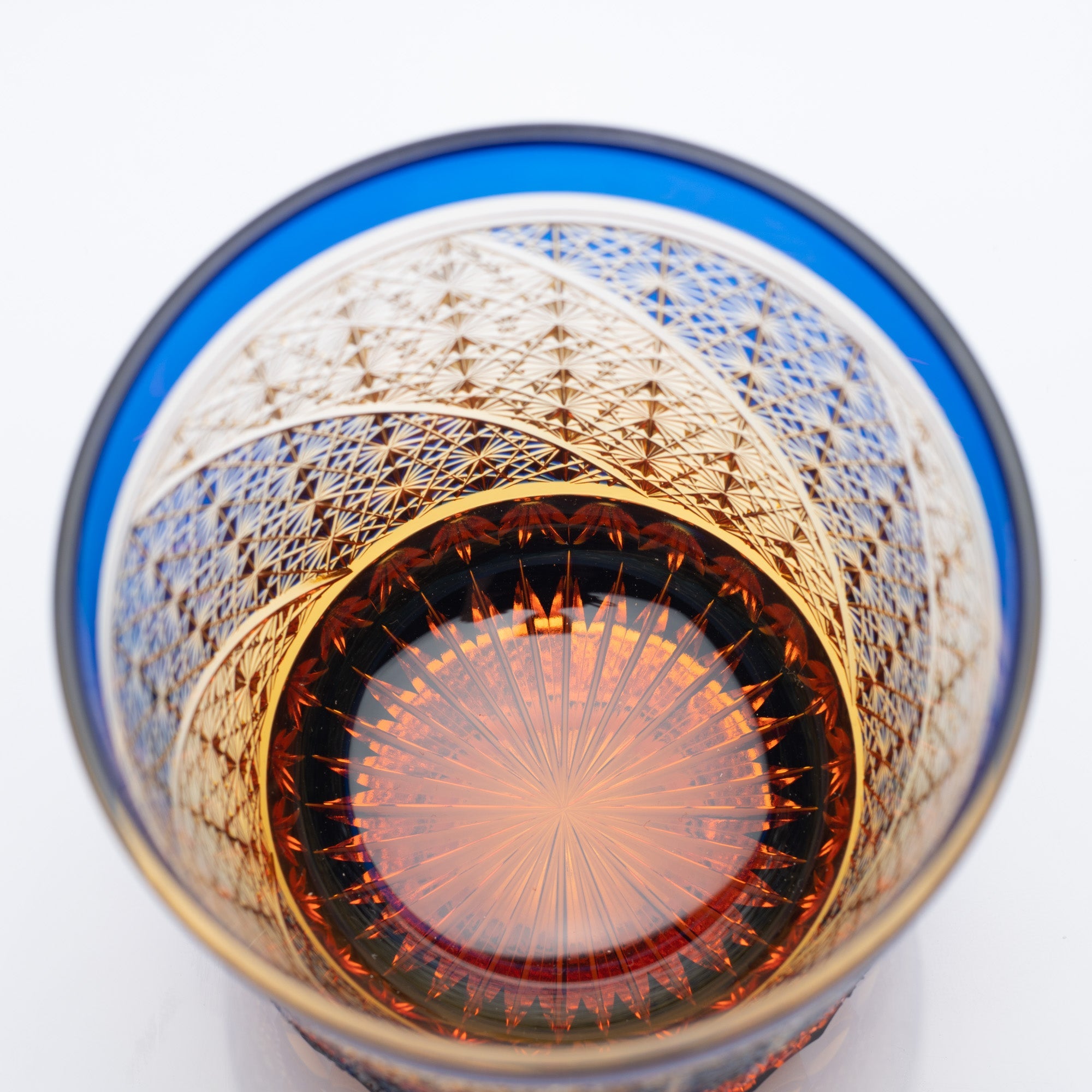
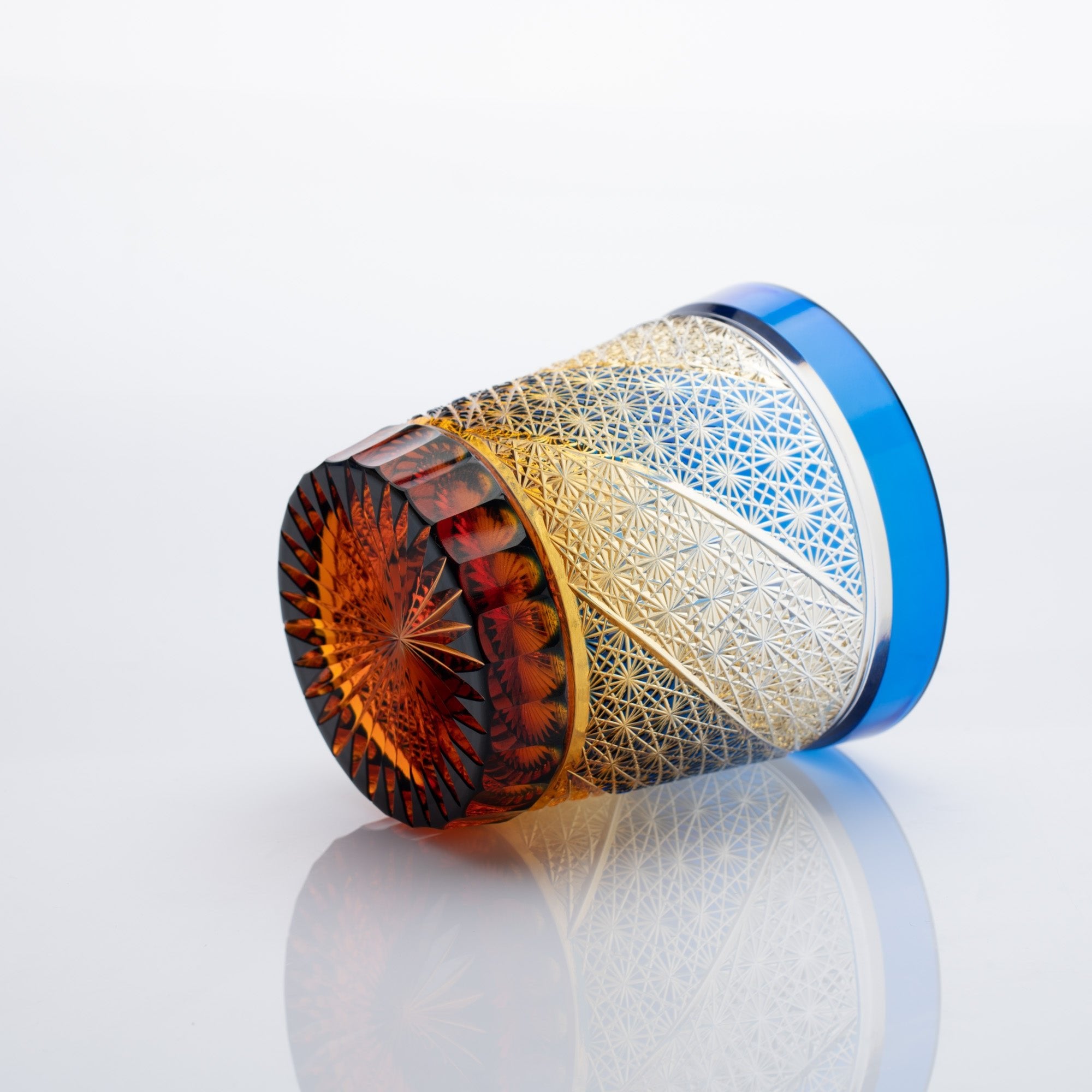
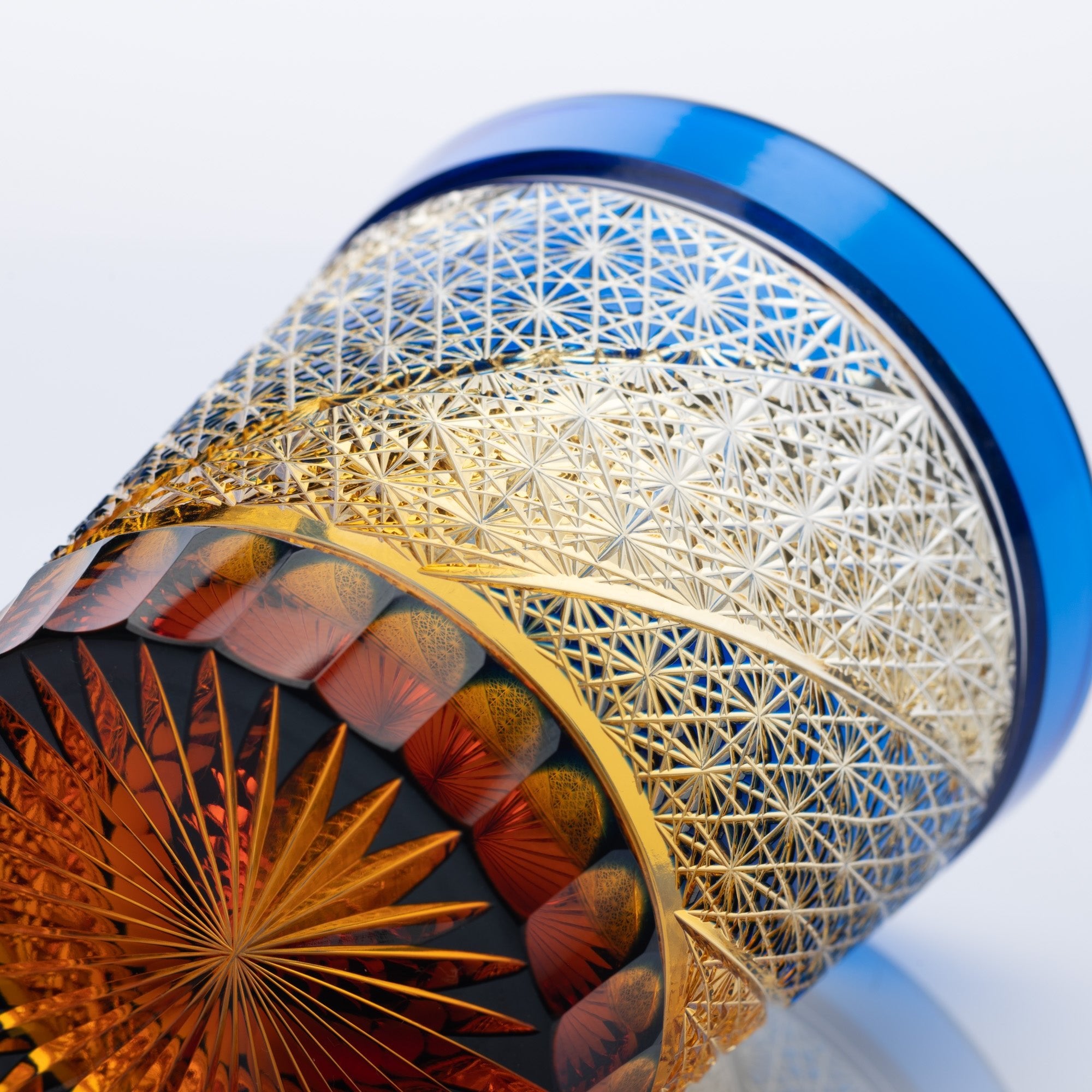
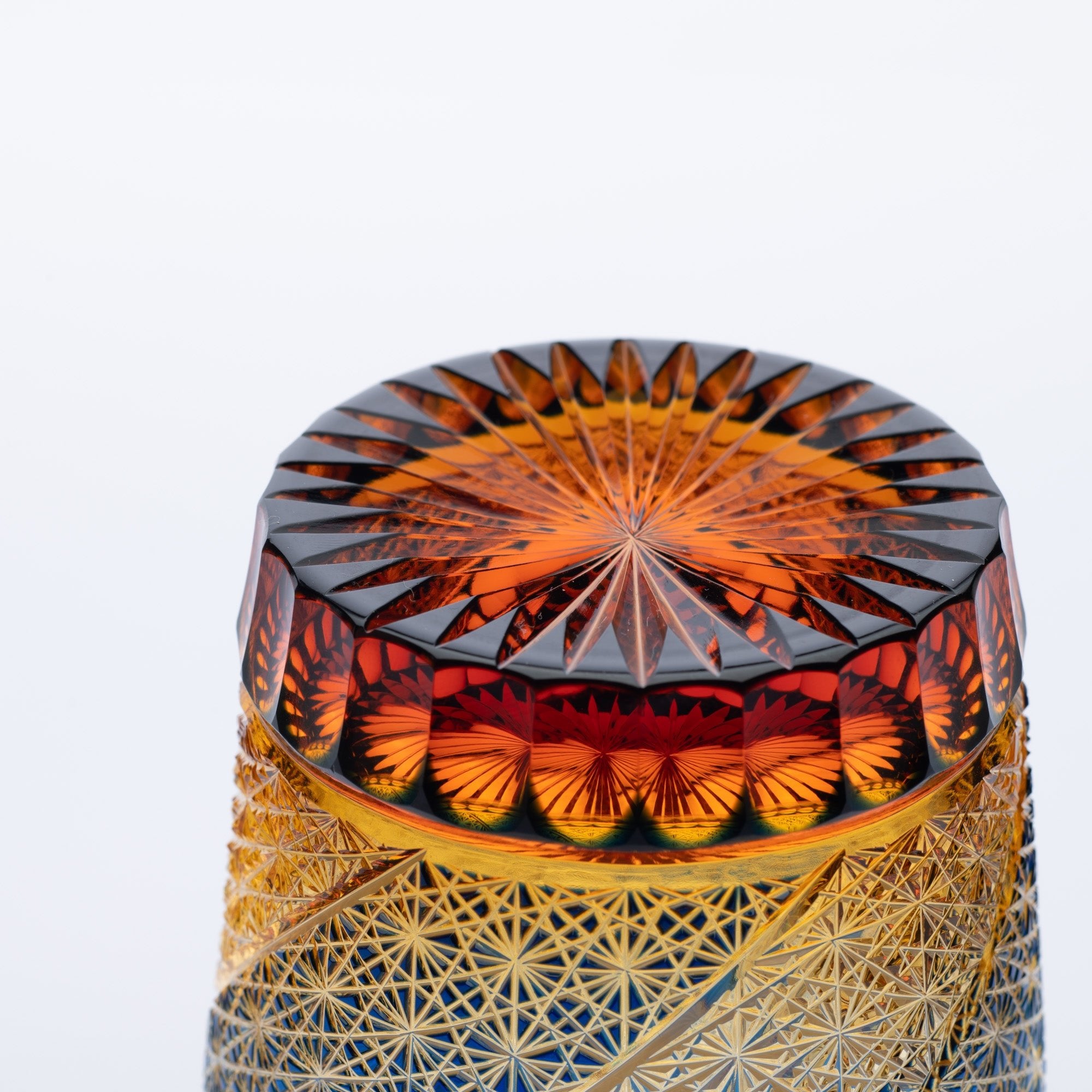
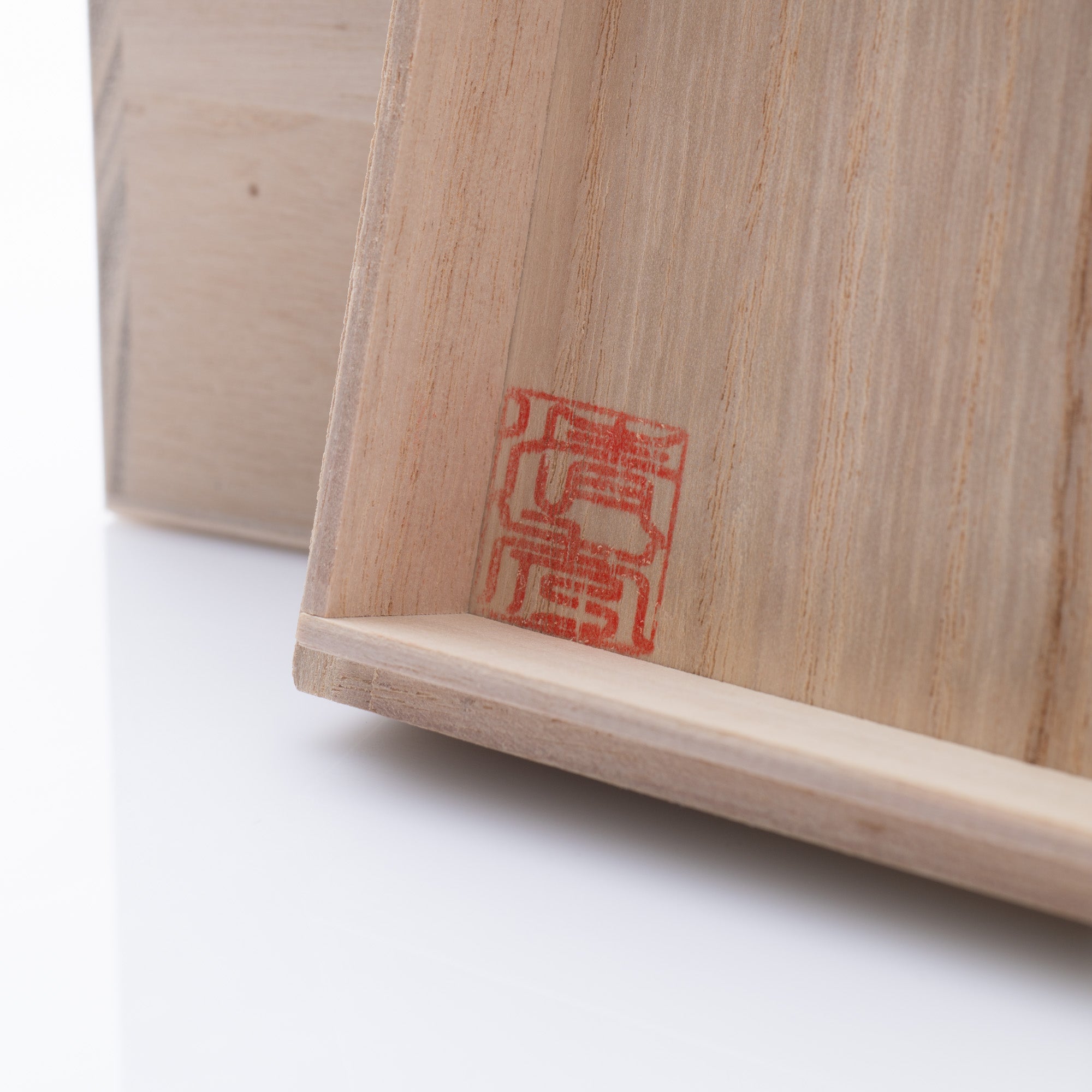
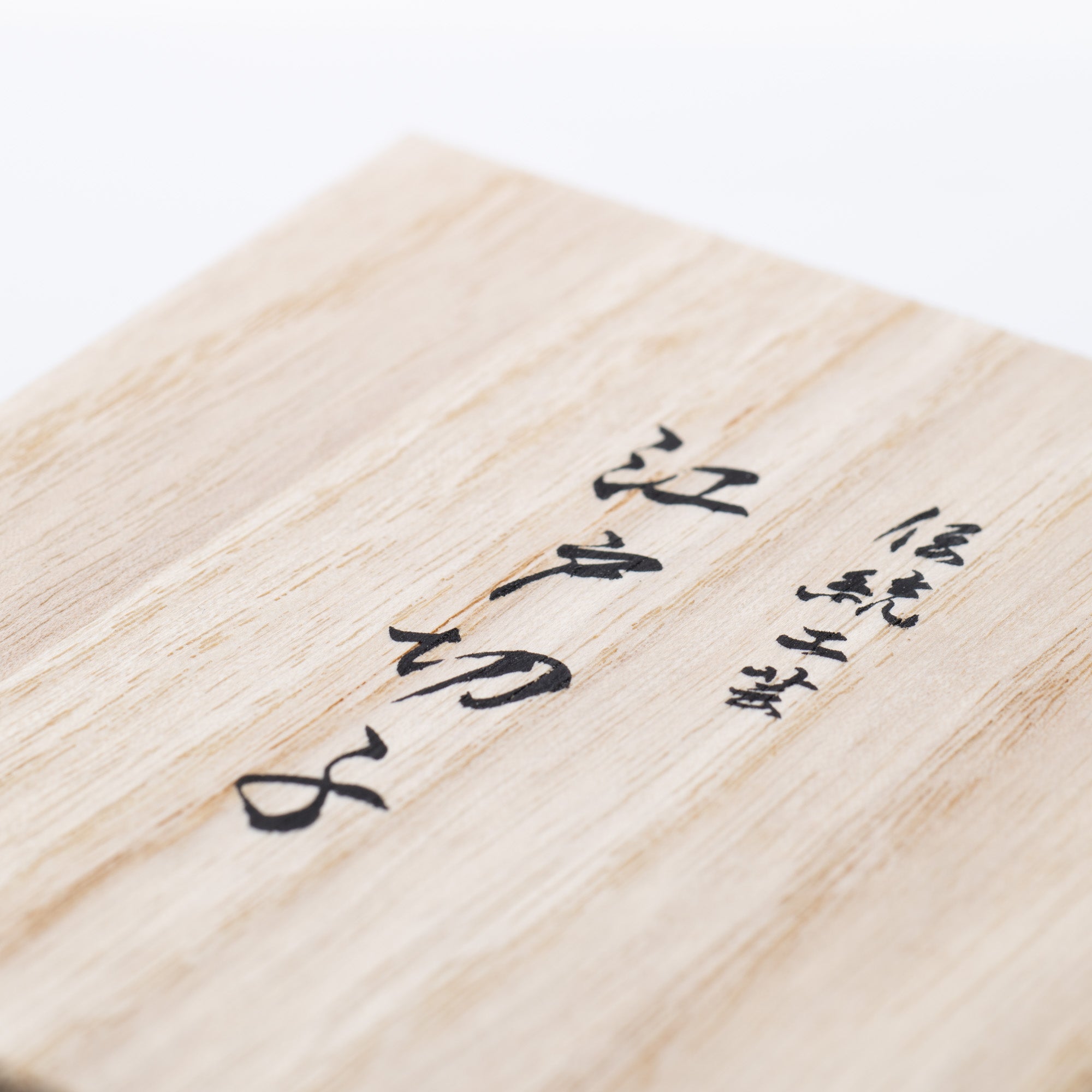
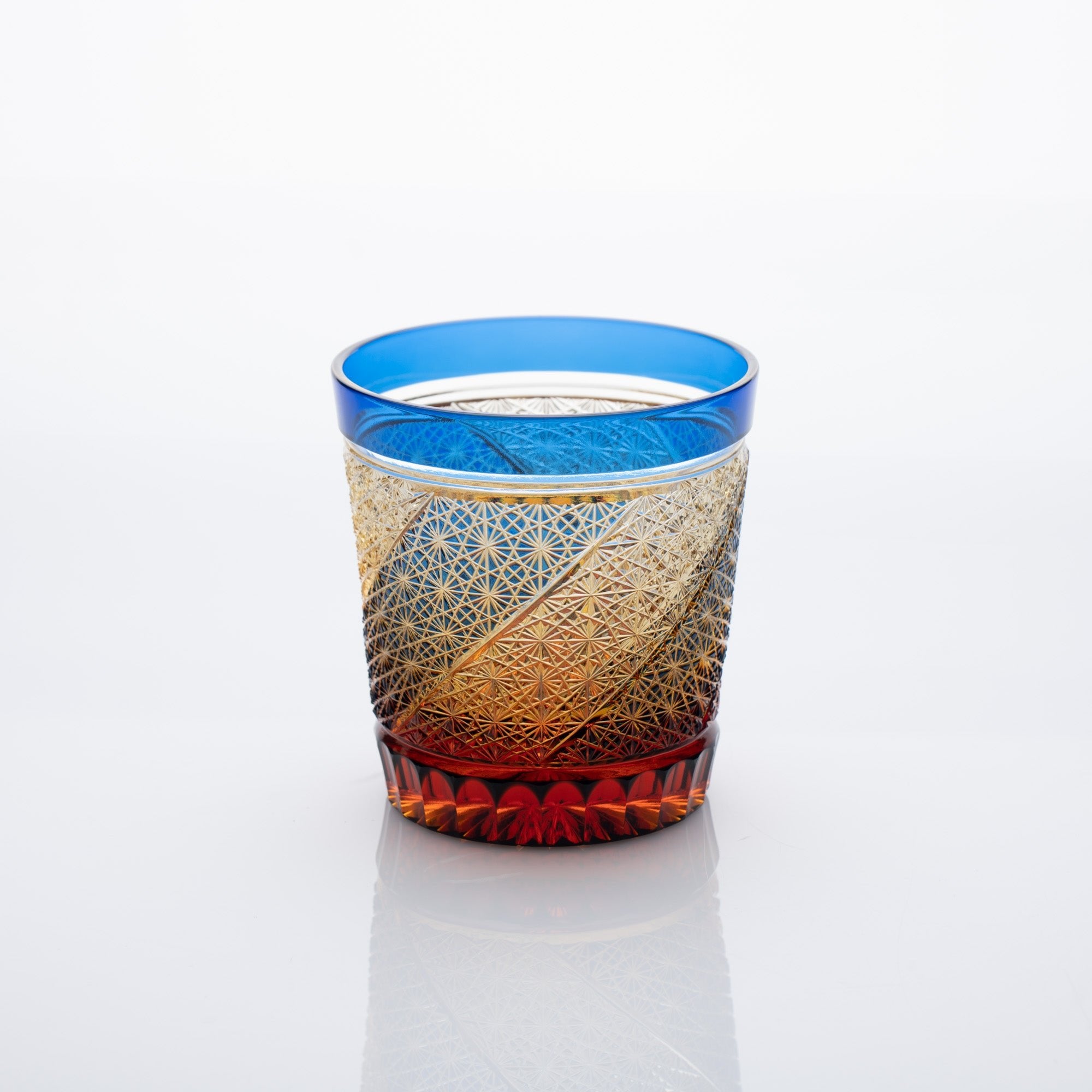
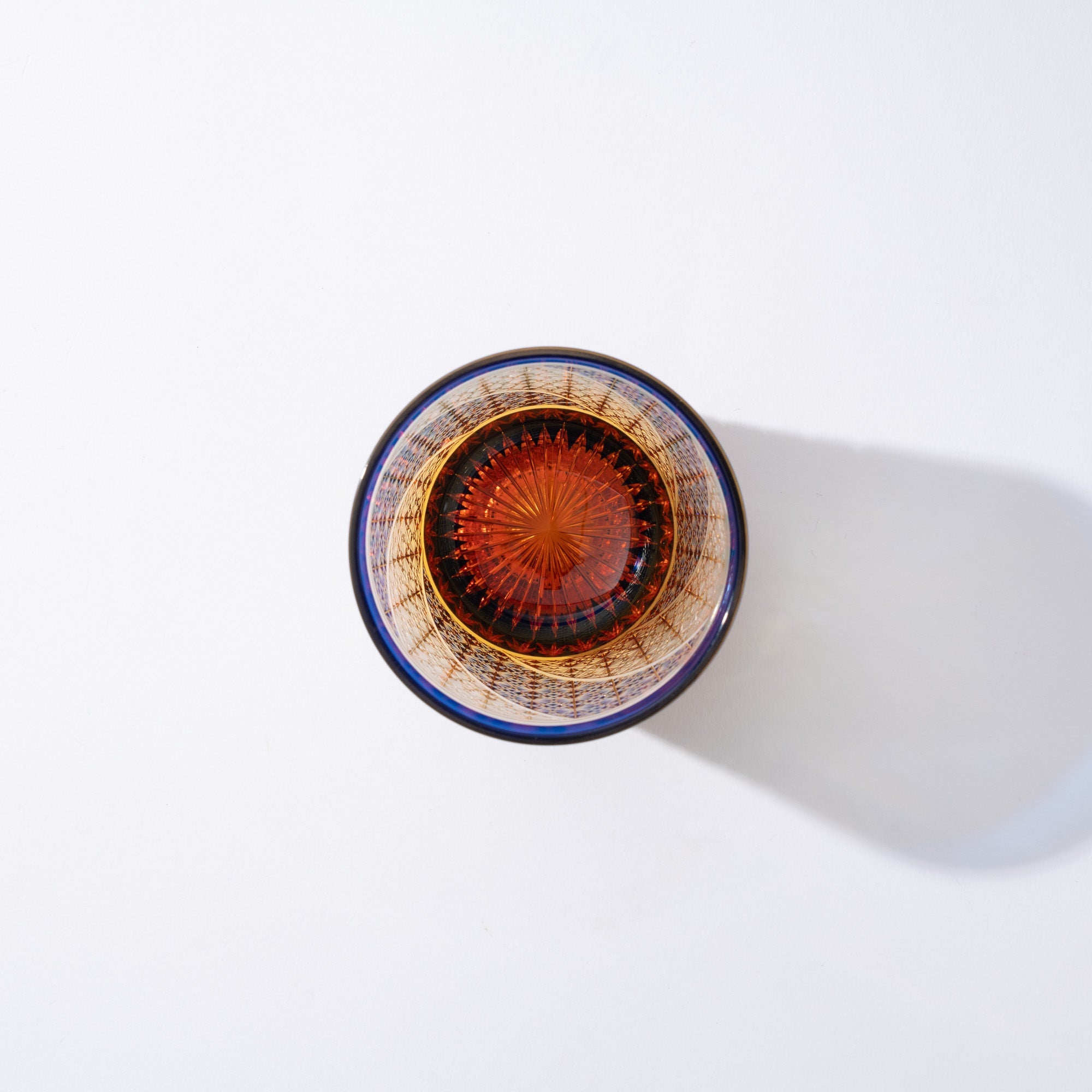
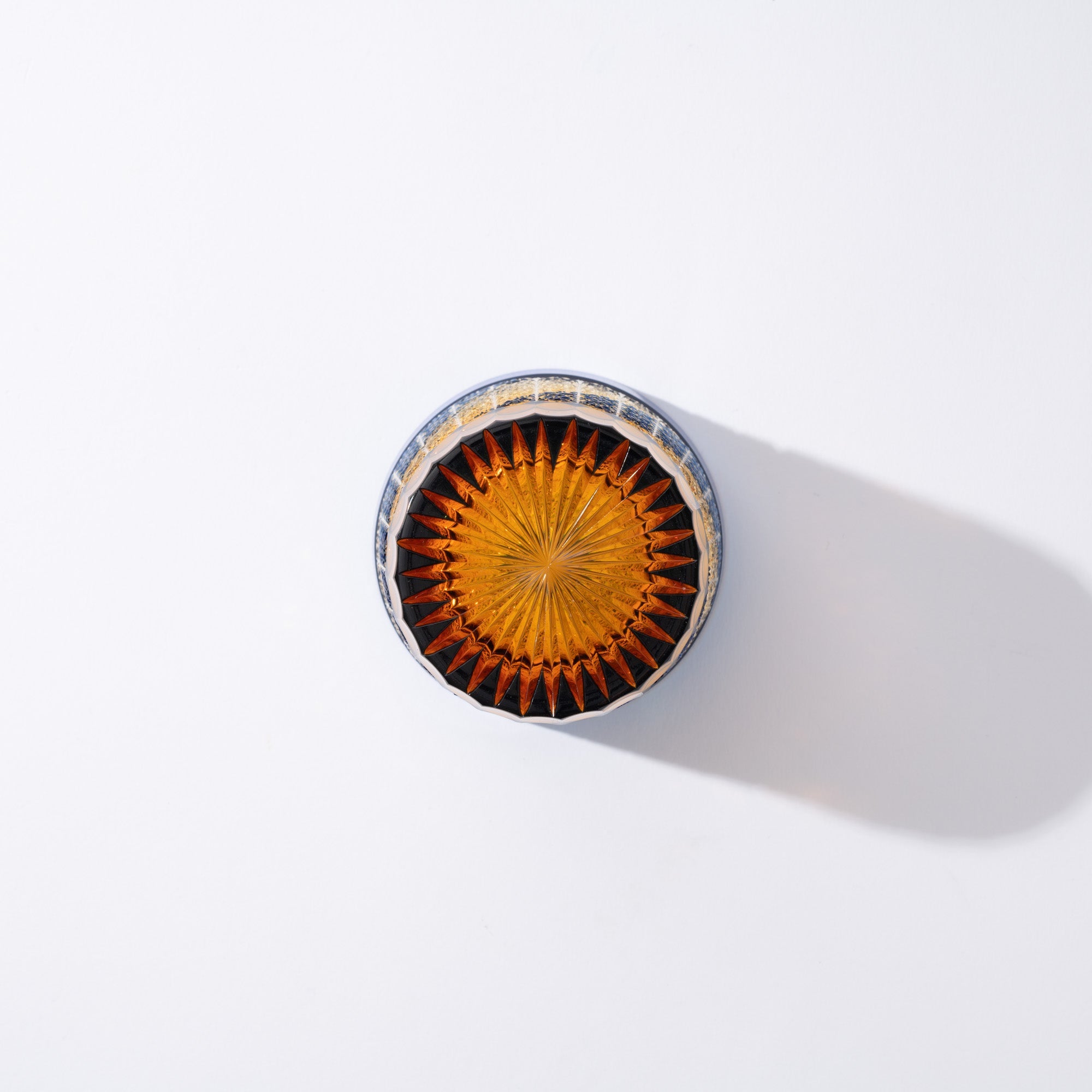

Blau Bernsteinfarbenes Whiskyglas
Estimated Shipping Widget will be displayed here!
Mit diesem sorgfältig handgefertigten Whiskyglas entführt Sie jeder Schluck in eine Welt zeitlosen Stils, der Tradition seine eigene Note verleiht. Da jedes Glas von Hand gefertigt wird, sehen sie zwar ähnlich umwerfend aus, aber keine zwei sind genau gleich.
Das komplizierte Netzwerk aus Linien und Sternenformen erzeugt eine zarte Textur, die sich um die Außenseite legt. Wenn Sie es jedoch in der Hand halten, werden Sie von dem schweren Handgefühl beeindruckt sein, das seine unglaubliche Qualität Lügen straft.
Die tiefblaue Farbe dieses Glases wird genannt Ruri auf Japanisch und ist allgemein als Lapislazuli bekannt. Die sorgfältig platzierten Schnittlinien heben sich von den diagonalen Ruri- und Bernsteinstreifen ab. Mit einem dunkelbernsteinfarbenen Boden versehen, ist es ein elegantes Modell, das sich hervorragend zu Ihrem schönsten Tischgedeck eignet, aber auch solo neben Ihrem Lieblingssessel eine beeindruckende Präsenz bietet.
Fassungsvermögen bis zu 200 ml (6.Mit einem Fassungsvermögen von ca. 237 ml (8 fl oz) Ihres Lieblingsgetränks hat es die richtige Größe für alles, was auf der Speisekarte steht, und die dezenten Farbtöne der Streifen und der kontrastierende Boden werten den Cocktail, Mocktail oder jede andere Flüssigkeit im Inneren sofort optisch auf.
EINZELHEITEN
| Quantity | 1 |
| Size |
D 8.4 cm (3.3 in) x H 9 cm (3.5 in) Box Size: L 11 cm (4.3 in) x W 11.5 cm (4.5 in) x H 11 cm (4.3 in) |
| Capacity | 200 ml (6.8 fl oz) |
| Material | Glass |
| Package Type | Wooden box |
| Microwave | No |
| Dishwasher | No |
Hersteller / Marke
Durch die Weitergabe der traditionellen Technik des Handpolierens besitzen Kiyohides Glaswaren einen faszinierenden Glanz, der den Betrachter in seinen Bann zieht. Als zertifiziertes Mitglied der privilegierten Edo Kiriko Cooperative Association und national anerkannter Handwerker präsentiert uns Kiyohide die raffiniertesten und anspruchsvollsten Designs der japanischen Kristallglaskunst.
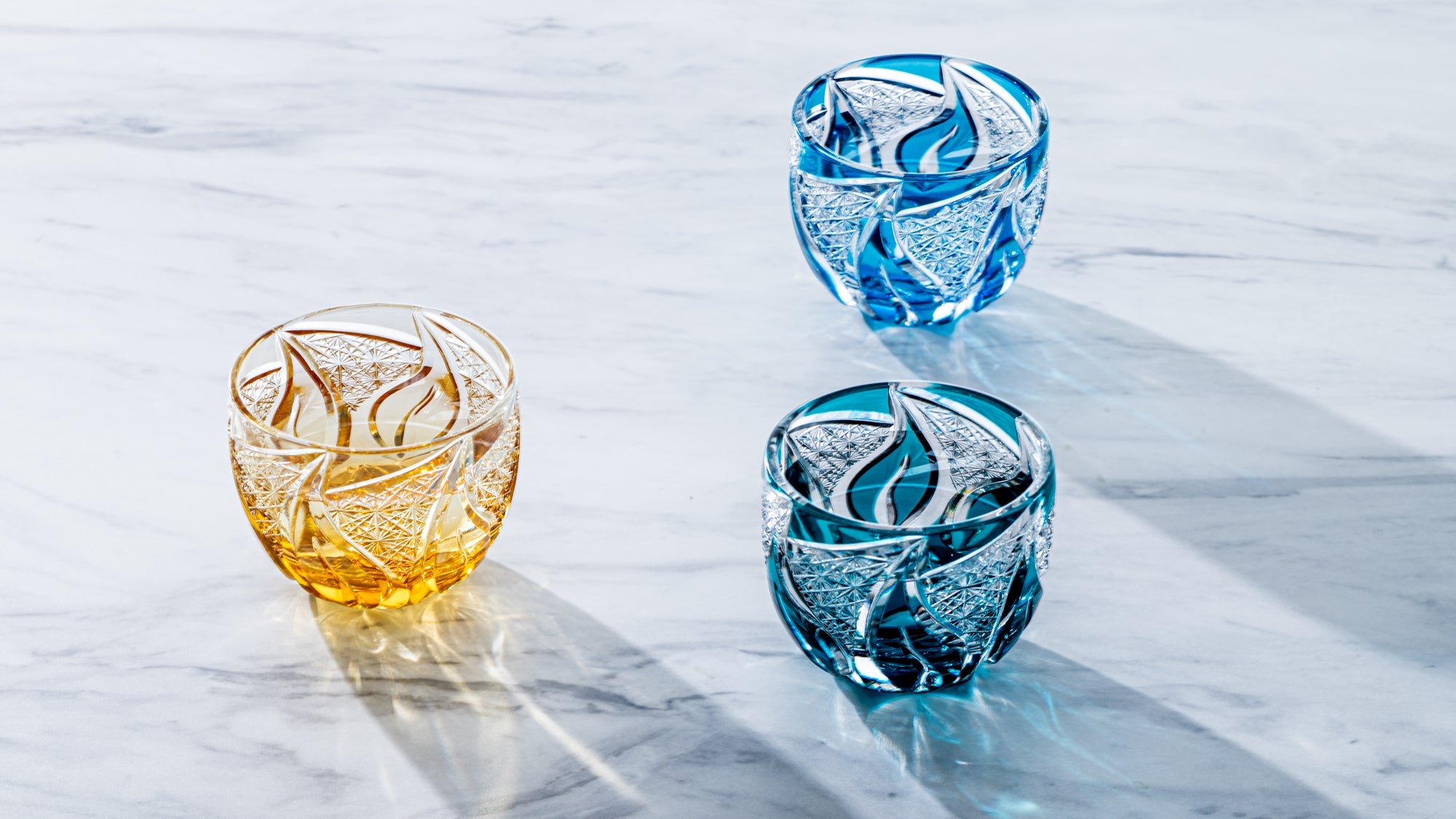
Kunsthandwerk
Tokio, die Hauptstadt Japans, ist auch ein Zentrum des Kunsthandwerks. Zu den vielen Traditionen zählen Edo-Glas und Edo Kiriko – Glaswaren, die in Edo, dem früheren Namen des Zentrums von Tokio, seit rund 200 Jahren weitergegeben werden.
Ihre leuchtenden Oberflächen spiegeln die jahrhundertealte Handwerkskunst wider, die im ehemaligen Edo-Gebiet entstand und im modernen Tokio noch immer floriert.
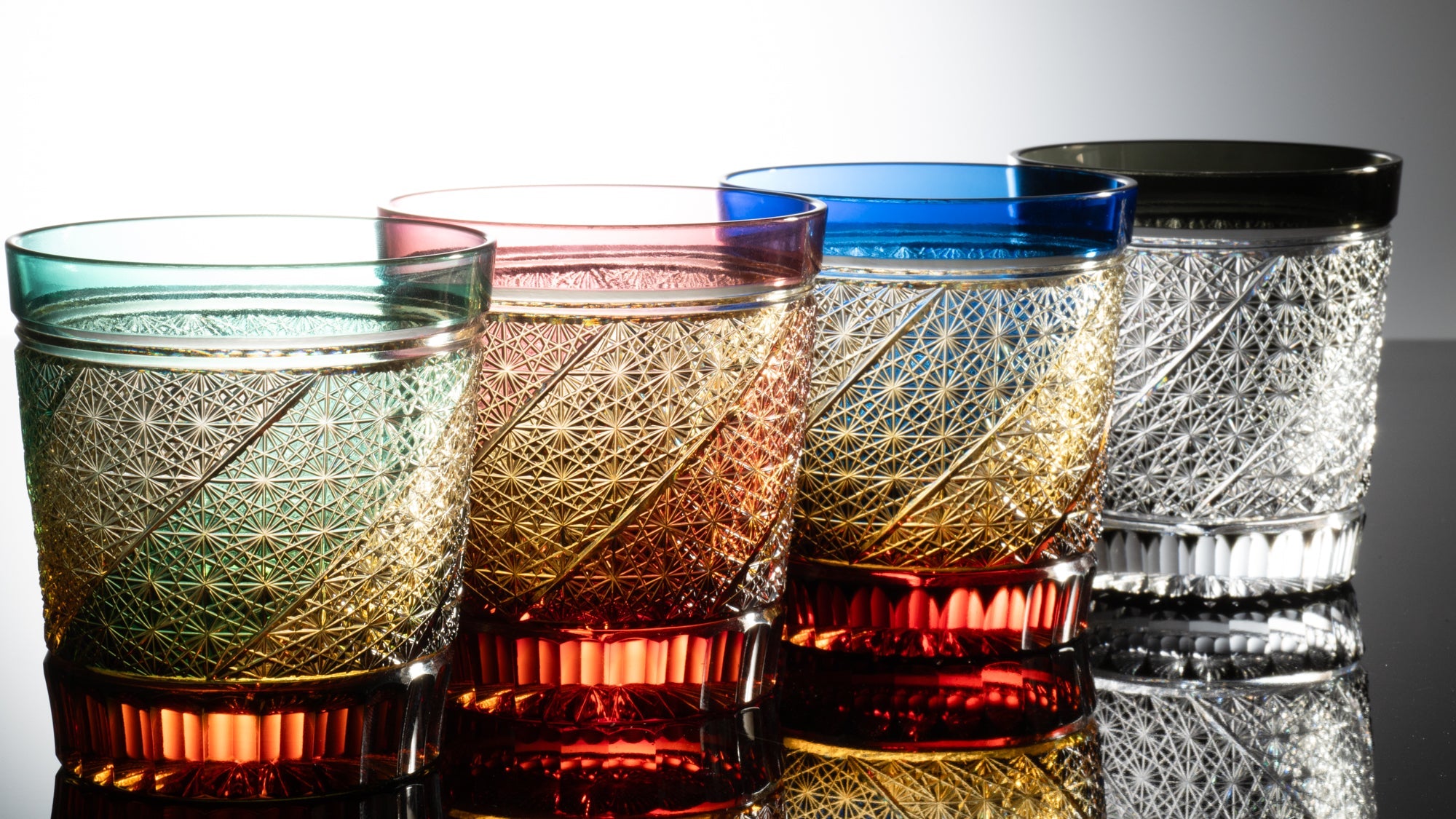
Optionen auswählen

















Estimated Shipping Widget will be displayed here!
Whiskygläser
Ein einziger Schluck japanischen Whiskys kann einen gewöhnlichen Moment in etwas ganz Besonderes verwandeln. Jedes Glas dieser kuratierten Kollektion verkörpert meisterhafte Handwerkskunst, raffinierte Silhouetten und hochwertige Materialien. Mit einer vielfältigen Auswahl, die die reichen Aromen und Nuancen Ihres Lieblingsgetränks hervorhebt, finden Sie garantiert das perfekte Glas für Ihren persönlichen Stil. Wählen Sie Ihr ideales Whiskyglas und jeder Schluck wird zu einem unvergesslichen Genuss.
